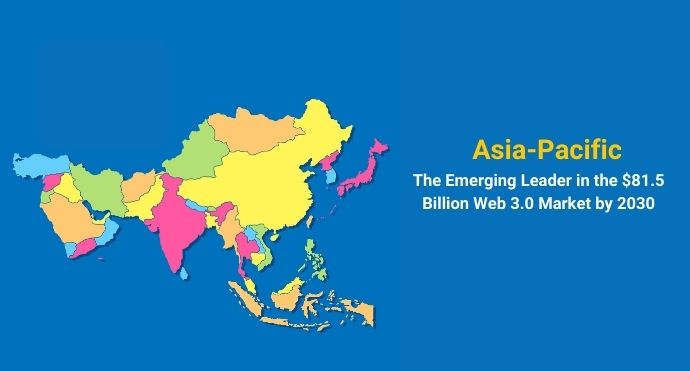The digital technology landscape is continuously evolving, and the Asia-Pacific (APAC) region is at the forefront of this transformation. Known for its economic diversity and tech-savvy population, APAC is pioneering the next wave of internet advancement – Web 3.0. This region is fostering an ecosystem of developers, entrepreneurs, and companies dedicated to shaping the future of the web.
Web 3.0, the next generation of internet technology, is projected to reach a global market value of US$81.5 billion by 2030. This exponential growth is primarily driven by industries such as banking, financial services, insurance, e-commerce, retail, healthcare, and pharmaceuticals. These sectors are actively embracing and integrating Web 3.0 technologies into their operations.
Southeast Asia (SEA), in particular, stands at the forefront of this digital transformation. According to the annual SYNC Southeast Asia report by Meta and Bain & Company, SEA surpasses other APAC markets, such as China and Japan, in fintech and Web 3.0 adoption. The sub-region exhibits a higher penetration rate of digital wallets, cryptocurrencies, and non-fungible tokens (NFTs), indicating a rapid adoption of these advanced technologies.
The APAC region is also experiencing remarkable growth in Non-Fungible Tokens (NFTs) and blockchain gaming, contributing significantly to the digital assets revolution. Platforms like FormosArt, a Singapore-based NFT marketplace specializing in Asian contemporary art, and Mintable, a marketplace for users to mint, buy, sell, and trade NFTs, are playing crucial roles in this digital transformation.
Despite the promising growth, the road to mass adoption of Web 3.0 is not without challenges. Regulatory uncertainty, usability, accessibility, interoperability, and scalability issues pose significant hurdles. However, governments across the Asia Pacific are recognizing the potential of the decentralized web ecosystem and are taking initiatives to foster its development. Countries like Hong Kong, Japan, India, Indonesia, and the Philippines have launched initiatives and established policies to support Web 3.0 development and adoption.
Looking ahead, the rise of Web 3.0 is empowering individuals and communities, marking the advent of a decentralized era of value exchange. Brands need to embrace this paradigm shift and prioritize community building, wallet strategies, and immersive experiences to succeed in this evolving landscape.
Backed by progressive government initiatives and a flourishing ecosystem, the APAC region is poised to assume a prominent position in shaping the trajectory of Web 3.0. The future of the internet is here, and the Asia-Pacific region is leading the way.
Conclusion:
In conclusion, the Asia-Pacific region is emerging as a significant player in the global Web 3.0 landscape. With its tech-savvy population, progressive government initiatives, and a vibrant ecosystem of developers and entrepreneurs, APAC is well-positioned to lead the projected $81.5 billion Web 3.0 market by 2030. The region’s rapid adoption of digital wallets, cryptocurrencies, NFTs, and blockchain gaming indicates a promising future for Web 3.0 technologies.
While challenges such as regulatory uncertainty and technical issues persist, the proactive measures taken by governments across the region signal a strong commitment to overcoming these hurdles. As we move forward, it is clear that the success of brands and industries will be increasingly tied to their ability to adapt to and integrate Web 3.0 technologies.
The rise of Web 3.0 marks the beginning of a new era of decentralized value exchange, and the Asia-Pacific region is poised to be at the forefront of this exciting transformation. The future of the internet is here, and it is being shaped in the Asia-Pacific.



